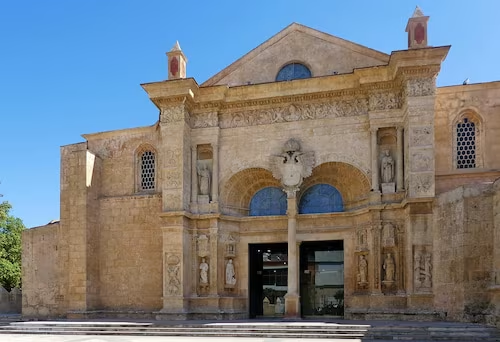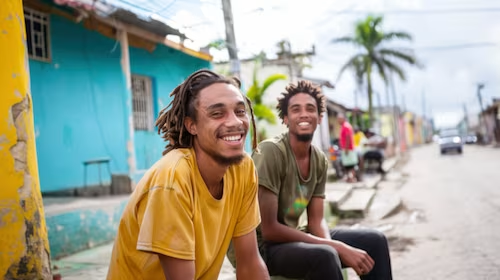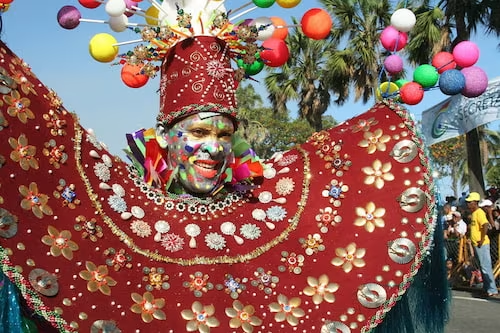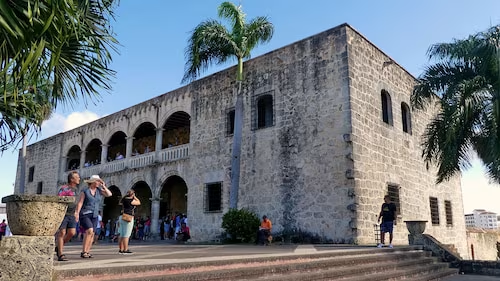Dominican Republic culture: Discover traditions, clothing, food & daily life
Dominican Republic culture: Discover traditions, clothing, food & daily life
When you think of the Dominican Republic, you usually think of its white-sand beaches but this country is so much more ! The Dominican Republic is a cultural mosaic alive with history, music, color, spirituality, and a deep sense of community. With influences ranging from Taíno roots to Spanish colonial heritage and African rhythms, Dominican culture is one of the richest in the region. This article invites you to explore the island's vibrant traditions, food, celebrations, clothing, and customs.

A cultural overview of the Dominican Republic
Dominican culture and traditions are a blend of its colonial past, the African diaspora, and the indigenous Taíno heritage. Evidence of these influences can be seen in everything from music and cuisine to language and religious customs.
Dominican Spanish is melodic and full of expressive slang reflecting the joyful nature of its people. Religion plays a central role, with most Dominicans identifying as Roman Catholic. However, Evangelical movements and folk beliefs rooted in African spirituality also persist.
At the heart of Dominican family culture is the multigenerational household. Grandparents often live with their children and grandchildren, creating tight-knit family units based on respect, support, and shared meals. Social life revolves around family, and even strangers are welcomed like old friends.

Traditions and celebrations in the Dominican Republic
The best way to experience Dominican traditions is through the country’s festivals and cultural holidays. These events are more than just entertainment; they are expressions of national identity.

Carnival (February): With its masks, Diablos Cojuelos, parades, and dances, Carnival powerfully showcases Afro-Caribbean heritage and resistance.
Semana Santa (Holy Week): A time for religious reflection and family travel to the coast, blending sacred rituals with local customs.
Altagracia Day (January 21) honors the Virgin of Altagracia, the spiritual protector of the Dominican people. It is celebrated with pilgrimages and religious services.
Restoration Day (August 16): A patriotic holiday that celebrates the war of 1863–65, which reclaimed Dominican independence from Spanish colonial rule.
These events embody Dominican traditions and celebrations that give rhythm to life on the island.
Dominican Republic food culture: A flavorful identity
To truly understand the culture of the Dominican Republic, sit down for a meal.
The country's cuisine blends indigenous ingredients with Spanish techniques and African flavors, resulting in comforting and vibrant dishes.
Dominican cuisine:
La Bandera Dominicana (the Dominican Flag): A trinity of rice, beans, and meat (usually chicken or beef) with salad, symbolizing national pride.
Sancocho: A celebratory stew made with several meats and root vegetables, served at gatherings and holidays.
Mangú: Boiled and mashed green plantains served with fried cheese, eggs, and salami, a beloved breakfast dish. The dominican food for breakfast !
Tostones: Crunchy, twice-fried plantains served with garlic sauce.
What to Drink:
Mamajuana: A traditional herbal rum with aphrodisiac properties.
Morir Soñando: A refreshing, creamy blend of orange juice, milk, sugar, and ice..
Presidente Beer: The cold lager of choice at every celebration or family gathering.
In Dominican homes and markets, food is more than just sustenance; it's an act of love and hospitality.
Clothing and symbols: Dominican Republic culture clothing
The clothing worn in the Dominican Republic reflects the tropical climate and the cultural identity of its people. Dominicans dress with pride on an everyday basis, even in casual settings. Cleanliness and presentation are highly valued, so you’ll often see locals wearing neat, stylish outfits, even when running errands or relaxing at home. Several dominican artists like Jenny Polanco o OScar de la Renta are very famous.

The national flag, featuring a white cross, blue and red blocks, and a Bible at its center, is not just a political emblem, but also represents Dominican values: faith, sacrifice, and liberty. The flag is commonly displayed on balconies, vehicles, and in public squares.
Clothing and symbols act together as a visual language through which Dominicans express their identity, pride, and memory.
Dominican Republic Safety and Cultural Travel Tips
Is the Dominican Republic safe? Yes, especially in popular tourist destinations such as Punta Cana, Samaná, and Santo Domingo. However, it’s always wise to:
Avoid isolated areas at night.
Use reputable transportation or rent from a trusted provider like Jumbo Car.
Stay aware of your surroundings, especially in large markets or during festivals.

Dominican people are welcoming and joyful, and travelers who approach them with respect and curiosity are often rewarded with unforgettable cultural experiences.
Let dominican culture move you
The culture of the Dominican Republic is not something you merely observe; it's something you experience firsthand. Every aspect of Dominican life invites you to feel connected and inspired, from the music in the streets and the flavors in every bite to the handcrafted jewelry and stories told through monuments.
Whether you’re admiring colonial architecture, dancing merengue in a plaza, or chatting with a local artisan, you’ll realize that this country's greatest treasure is its people and the culture they carry forward with pride.
🌴 Ready to dive into real Dominican culture?
Rent a car with Jumbo Car and explore hidden villages, coastal towns, and mountain festivals on your own terms and at your own pace. Let the culture guide your journey.